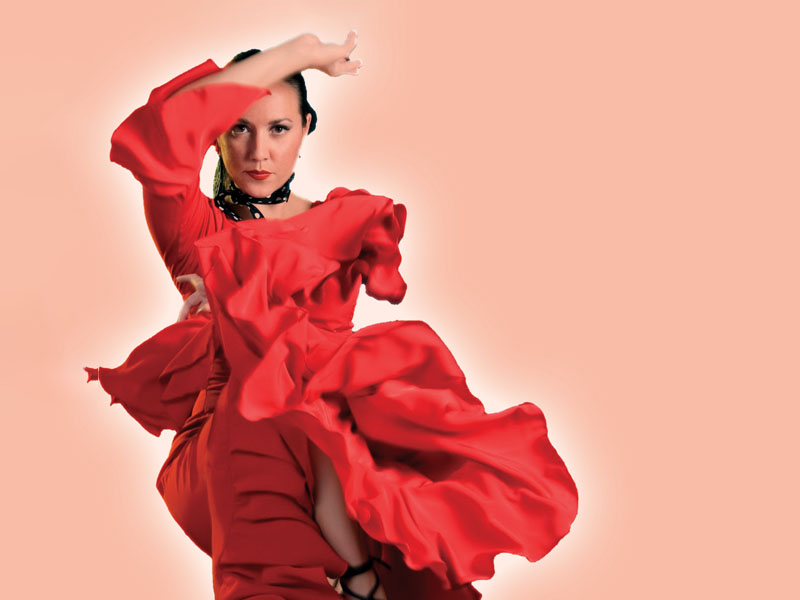Flamenco: Songs, Music and Dance
Issue 20

Spain has the most dances of all the European countries; if France is dance’s wet nurse, then Spain is the mother of dance. The legacy of Andalusia, flamenco and other traditional Andalusian dances are still performed today.
Traditional Spanish dancing can be divided into traditional dances and flamenco, which includes tango, farruca and garrotin. Flamenco was greatly influenced by the Roma, who have influenced Spanish music since the 18th century. Many major composers - including Manuel de Falla, Andalusia’s most famous composer - were inspired by Romany music.
Music has been described as a way to express Gypsies’ emotions. Romany Gypsies have been excellent musicians, writers, philosophers, poets and dancers since they moved to Spain from Northern India in the 18th century.
Due to its geographic location, Spain has been subject to foreign influences throughout its history. The Arab rule of Spain, which spanned nearly eight centuries between 711 AD and 1792 AD, was significant; the Arab-Islamic influence made a significant impact on Spanish life, both materialistically and morally.
Arabs greatly influenced music by bringing their oriental melodies, melodic modes, rhythms and musical instruments to Spain. Ziryab, the famous poet, musician and singer, is one example of an Arab who brought the traditions of Umayyad and Abbasid music and songs to Andalusia. Ziryab established a school that was the first of its kind in Andalusia; he taught music, singing, dancing, and prosody of poetry. This helped to popularize Arab music that adopted Spanish melodies.
Flamenco evolved from a mix of cultures; it began as songs that lamented social injustice, misery and the hardships of life.
Gypsies claim that they created this dance, its music and its songs. While we cannot ignore the significant influence of Arab music and traditional Andalusian dancing, we also cannot deny that Gypsies played an important role in developing it and making it popular. Flamenco was heavily influenced by eastern Byzantine rhythms, early Andalusian songs, and traditional eastern songs. This influence is visible in the folklore of several villages close to Granada, which was originally inhabited by Moriscos. The traditional songs of these villages reflect the extent to which Arab songs influenced flamenco, and the significant similarity between Andalusian songs and flamenco.
All flamenco songs - particularly those sung at Christmas - are North African Zanati songs in terms of scale and emotional performance. There is no doubt that the Moors created this genre of song to appease the Church and the Inquisition. The pharyngeal singing and the use of flamenco guitar, which bears a close resemblance to the Arab lute, are evidence of the influence of Arab music and singing.
Spain acquired an international reputation for musical and dance performances thanks to flamenco, which started to receive its due recognition at the end of the 20th century; prior to this time, flamenco was marginalized because of its association with Gypsies and the lower classes. In 1860, the art of flamenco spread from Andalusia, which was inhabited by Roma, to cities such as Madrid and Barcelona.
Since 1910, flamenco has been performed in theaters with magnificent shows rich in art and entertainment. This encouraged flamenco dancers and composers to find ways to develop and diversify their performances and to include sad and happy songs that could be performed individually or by a group, accompanied by guitar, piano and other instruments.
The art of flamenco clearly reflects the traditions and customs of Gypsy society, which is mostly patriarchal. Flamenco is an exception in that the dance celebrates women and the power they yield on the stage; male dancers circle the female dancer, and her dancing inspires the singer to create beautiful courtship songs that describe her beauty and femininity.
Originally, flamenco gave Gypsy women the opportunity to advance their social standing by attracting the best Gypsy men.
Female dancers typically wear loose, brightly colored dresses, while male dancers wear tight white or colored shirts with close-fitting black pants. The dancers wear solid shoes that make a distinctive sound when they stomp on the stage. In the past, dancers wore high-heeled shoes and traditional hats.
Mohammed Mahmoud
Abdul Hamid Fayid



































































